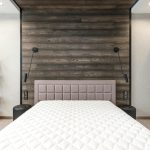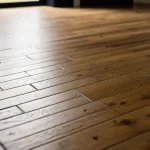Importance of Natural Light in UK Homes
Natural light plays a crucial role in enhancing the environment of a home, both aesthetically and health-wise. The benefits of natural light are extensive, influencing not just the mood but also the physical health of the inhabitants. Exposure to natural light increases serotonin levels, lifting moods and boosting productivity. Furthermore, it regulates the body’s circadian rhythm, improving sleep patterns and overall well-being.
Psychological impacts include reducing stress and anxiety, creating a sense of openness and comfort in living spaces. Physically, natural light aids in vitamin D synthesis, which strengthens bones and supports the immune system.
This might interest you : What Are the Most Popular Flooring Options for UK Homes?
From an aesthetic perspective, natural light can transform a space, adding depth and warmth. It highlights architectural features and materials, enhancing the home environment. Strategically placing mirrors and using light colors can amplify these effects, making spaces feel larger and more inviting.
Natural light also contributes to energy savings. By maximizing daylight, a household can reduce the reliance on artificial lighting, cutting down on electricity bills. Additionally, mood enhancement from natural light can lead to a more positive home atmosphere, encouraging social interactions and promoting a healthier lifestyle. In summary, the integration of natural light into a home is a multifaceted approach that brings various health benefits and enhances the aesthetic appeal and functionality of living spaces.
Also read : How can you create a multifunctional room in a UK home?
Architectural Considerations for Natural Light
In UK homes, architectural design plays a significant role in determining the flow and availability of natural light. Common architectural elements, such as bay windows or skylights, can significantly augment a home’s natural brightness. The orientation of a house is crucial; east and west-facing windows capture sunlight at different times, enhancing light throughout the day.
For optimising natural light, modifications like removing walls or installing glass partitions can allow sunlight to penetrate deeper into a home. Additionally, extending spaces with glass doors offers a seamless transition between indoors and outdoors while maximising sunshine exposure.
Thoughtful positioning of mirrors can further amplify natural light, bouncing it effectively around various rooms. When planning renovations, consider how structures like pergolas or open atriums can create opportunities for increased light without compromising privacy essential in urban UK areas.
Through these architectural considerations, homeowners can significantly enhance their living spaces, making them brighter and more welcoming all year round.
Window Treatments and Styles
When thinking of how to maximize the light flowing into your home, window treatments play an essential role. The choice of window blinds and curtains can greatly impact the amount and quality of light entering a room. Lightweight and sheer options are ideal for allowing maximum natural light penetration while maintaining privacy.
Evaluating Effectiveness
Blinds crafted from reflective materials can redirect sunlight into the room, maximizing brightness. Similarly, light-colored curtains can diffuse light evenly across spaces. Opting for adjustable blinds or shades allows you to control the intensity and direction of incoming light.
Recommended Styles
Roman blinds and cafe-style curtains are particularly effective at enhancing light while adding a touch of elegance. Shutters with adjustable slats offer another stylish solution to modulate light and airflow. Consider seasonal adjustments, such as swapping heavier drapes for sheer summer options, to optimise light throughout the year.
Seasonal Adjustments
As seasons change, so does the sun’s position. Adjusting your window treatments accordingly can help maintain consistent light levels. Using thermal blinds in winter can provide insulation while allowing light during the shorter days. By considering these factors, you can significantly improve both the aesthetic and functionality of your home while maximising light entry.
Color Schemes and Interior Design Choices
Harnessing the power of interior design is essential for maximizing natural light in a home. Light colors play a pivotal role in enhancing illumination. Walls painted in soft hues like cream or pale blue reflect light more effectively than darker shades, creating a brighter and more open space.
Reflective Surfaces
Incorporating reflective surfaces is another key strategy. Mirrors and glossy finishes on furniture or flooring bounce light throughout a room, amplifying the available daylight. Strategic placement of these elements near light sources can significantly enhance overall brightness.
Furnishings and Light Flow
The impact of furnishings on light flow cannot be overstated. Opt for minimalist furniture with clean lines to prevent light obstruction and maintain an airy feeling in the room. Avoid heavy drapery and bulky pieces that absorb light and create shadows, which can make spaces appear smaller and dimmer. By carefully selecting and arranging elements in your living space, you can create an environment that optimally utilizes natural light, leading to a more inviting and energizing home year-round.
Furniture Placement to Enhance Light Flow
In the pursuit of creating brighter spaces, furniture arrangement plays an integral role in optimizing natural light flow within a home. Strategic placement of furniture can prevent obstruction of light, thereby illuminating living areas effectively.
One fundamental strategy is to position larger pieces of furniture, such as sofas and bookshelves, away from windows. This simple adjustment minimizes potential shadows and allows for maximum light penetration. By keeping the central area of a room clear, light can travel more freely, fostering an open and airy atmosphere.
Space optimization through multifunctional furniture is also key. Nesting tables, foldable chairs, or sofas with storage can declutter a space without compromising on comfort, preserving valuable light pathways. Such furniture pieces not only maintain a sleek look but also enhance light access by reducing overcrowding.
Emphasizing openness and light flow, consider arranging seating to face windows, thereby maximizing exposure to natural light while benefiting from the scenic views. Avoid placing dark-colored furniture near windows as they tend to absorb rather than reflect light, which can darken rooms.
In essence, thoughtful furniture arrangement not only ensures effective light dispersal but also reinforces the overall ambiance of a room, making spaces feel larger and more welcoming.
Seasonal Solutions and Considerations
Understanding how seasonal variations affect natural light in UK homes is essential for maintaining optimal illumination throughout the year. The country’s diverse weather patterns impact light availability, requiring homeowners to adapt their strategies accordingly.
One effective way to manage light changes is by adjusting furnishings and window treatments seasonally. During the brighter summer months, swapping heavier curtains for lightweight, sheer fabrics ensures that homes remain bright and airy. In winter, thermal blinds can help retain heat while still allowing much-needed light to penetrate during shorter days.
Outdoor adjustments play a key role in optimizing natural light as well. Strategic landscaping choices, such as planting deciduous trees, can provide shade during summer while allowing sunlight to filter through bare branches in winter. Additionally, pruning overgrown bushes and trees near windows can enhance light exposure year-round.
Incorporating these seasonal solutions and considerations ensures that UK homes can effectively harness natural light, improving both their aesthetic appeal and energy efficiency. By understanding the interplay of light and season, homeowners can make informed decisions that enhance their living environments year-round.
Expert Recommendations and Case Studies
When seeking to enhance natural light within UK homes, expert insights and real-world examples can provide invaluable guidance. Several architects and designers recommend orienting homes toward the sun’s path to maximize its exposure. For instance, positioning living areas with east-facing windows can capture morning light, promoting a bright start to the day.
Case Studies
Case studies often illustrate transformations achieved through strategic design choices. In one example, a Victorian home underwent renovations featuring roof skylights and extended kitchen areas with wide, glass doors. These modifications enhanced the home environment by allowing natural light to flood interior spaces, creating a welcoming atmosphere.
Practical Solutions
Experts also emphasize the practicality of budget-friendly solutions. Simple changes, like opting for light-colored decor or hanging mirrors opposite windows, can significantly amplify light access. Additionally, utilizing sheer window treatments assists in maintaining privacy while permitting ample sunlight.
Expert Advice
For those on tighter budgets, multifunctional furniture such as open-backed shelving can help de-clutter while allowing light to filter through. By incorporating these expert-recommended strategies and learning from successful case studies, homeowners can effectively enhance both the aesthetic and livability of their spaces through natural light.


